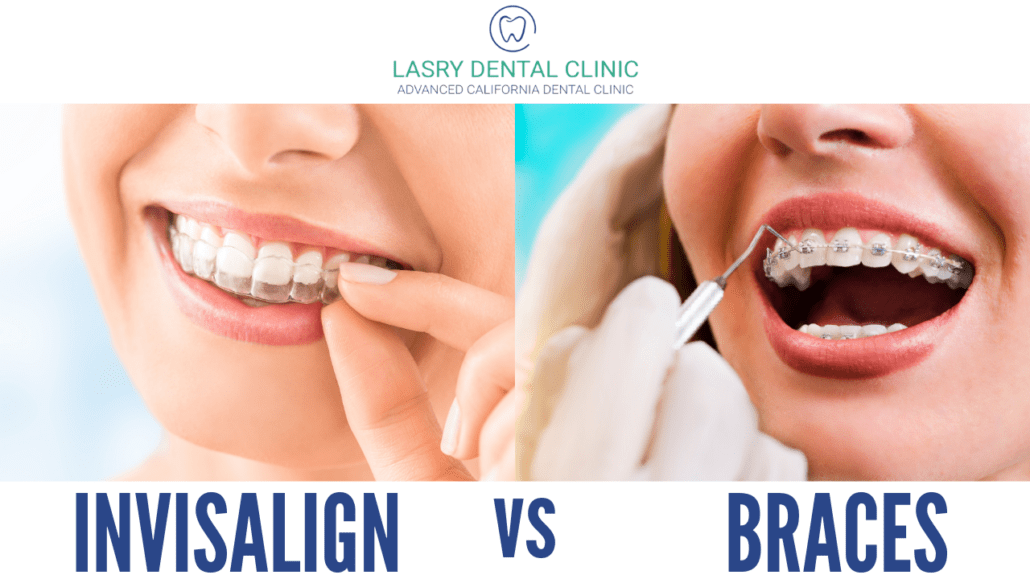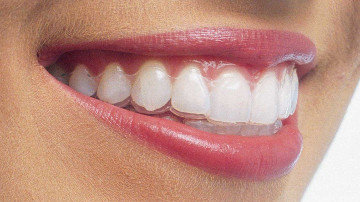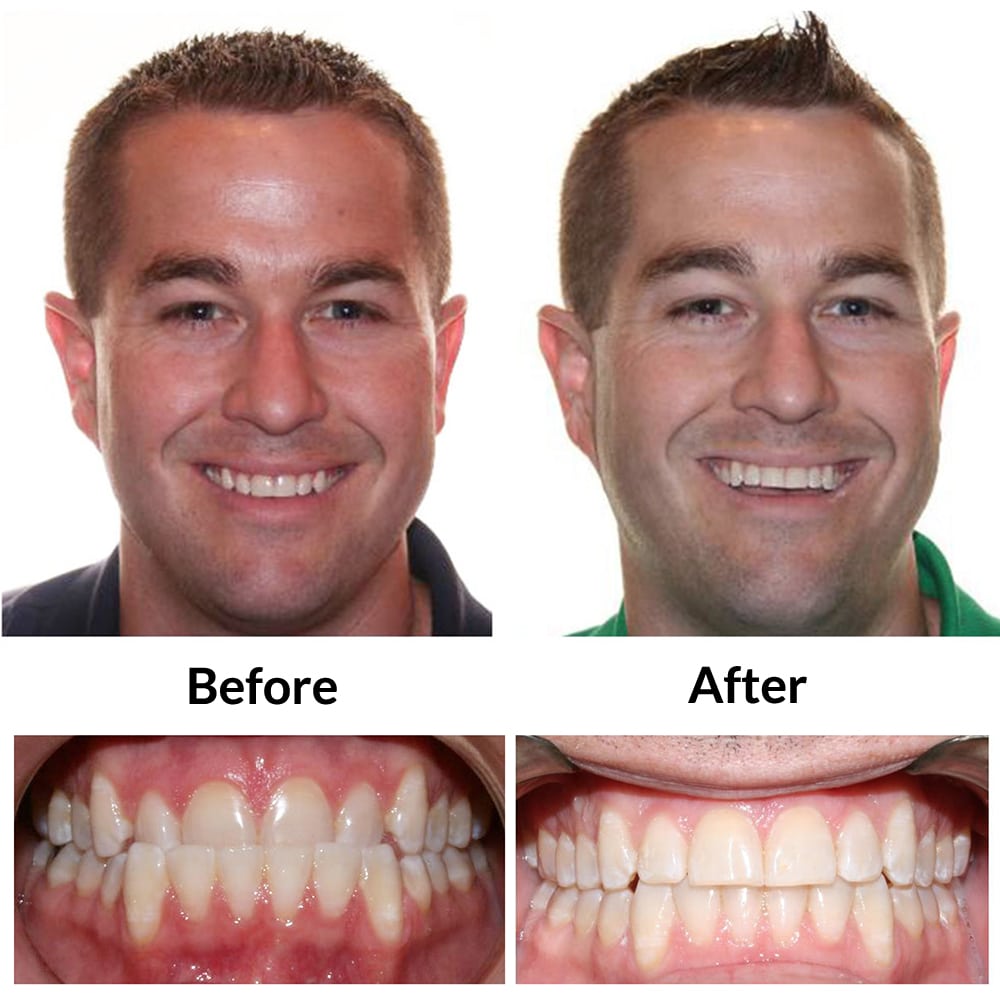Success Stories: How Invisalign Changed Lives and Increased Confidence
Success Stories: How Invisalign Changed Lives and Increased Confidence
Blog Article
Invisalign vs. Standard Braces: Which Option Is Right for You?
When taking into consideration orthodontic treatment, the selection in between Invisalign and traditional dental braces presents a number of vital variables that warrant careful examination. Invisalign uses a very discreet choice with removable aligners, while traditional braces offer a more visible yet efficient option for extreme imbalance. Each alternative incorporates distinctive benefits and downsides related to visual appeals, comfort, treatment period, and expense. Comprehending these subtleties is essential for making an educated decision that straightens with your personal preferences and way of living. The inquiry remains: which choice will ideal satisfy your orthodontic requirements and assumptions?
Summary of Treatment Alternatives

On the other hand, typical braces include steel brackets and cables that are adhered to the teeth. This method uses continuous pressure with time to achieve placement. While effective for intricate orthodontic concerns, standard dental braces call for regular visits for modifications and can posture challenges in preserving oral health due to the problem of cleansing around braces and cords.
Both alternatives have their merits, and the option usually hinges on particular oral problems, lifestyle preferences, and individual conformity. Inevitably, speaking with an orthodontic specialist is crucial for establishing one of the most appropriate therapy plan tailored to specific needs. Comprehending the subtleties of each choice can dramatically influence the general success of orthodontic treatment.
Visual Factors To Consider
A considerable aspect affecting the choice in between Invisalign and typical braces is the aesthetic appeal each treatment offers. Invisalign aligners are crafted from clear plastic, making them virtually invisible when put on. This very discreet look is especially appealing to teenagers and grownups who might feel uncomfortable concerning their orthodontic therapy. The capacity to preserve a natural smile throughout the placement procedure can dramatically boost the patient's self-confidence in social and specialist settings.
In contrast, traditional braces are composed of steel braces and wires, which can be a lot more recognizable. While advancements in orthodontic innovation have actually resulted in the advancement of smaller sized braces and colored elastics, conventional braces still keep an even more conspicuous profile. For some individuals, the exposure of braces might prevent them from seeking essential treatment.
Ultimately, the selection between Invisalign and standard braces might hinge on personal choices pertaining to appearances. Individuals that prioritize discernment frequently favor Invisalign, while those who are much less concerned regarding visibility may choose standard braces. Recognizing the visual effects of each choice is crucial for making a notified choice that lines up with one's lifestyle and choices.
Convenience and Convenience

In regards to comfort, Invisalign aligners are removable, allowing individuals to appreciate their preferred foods without limitation and preserve optimum oral health. Cleaning and flossing are streamlined, as the aligners can be secured throughout these regimens, whereas typical braces need mindful maneuvering around braces and cords.
Additionally, Invisalign's modern system enables less orthodontic gos to. Clients generally receive several collections see this here of aligners simultaneously, which can enhance the therapy procedure and lower time spent in the orthodontist's chair. On the other hand, typical braces demand regular changes, making them less hassle-free for those with busy timetables. Invisalign. Generally, the convenience and benefit of Invisalign make it an appealing option for several people looking for orthodontic therapy.
Treatment Period and Effectiveness
While both Invisalign and conventional braces work in correcting oral imbalances, the duration of therapy can differ significantly between both choices. Usually, Invisalign treatment can take anywhere from 12 to 18 months, depending upon the complexity of the instance. The clear aligners work by progressively shifting teeth right into their wanted placements, and normal follow-ups with an orthodontist help ensure development remains on the right track.
On the other hand, traditional braces often need a longer commitment, typically varying from 18 months to three years. This is because of their set nature and using braces and cables, which can be extra effective for complicated cases and extreme misalignments (Invisalign). The treatment efficiency of conventional dental braces is well-documented, as they enable for accurate changes and higher control over tooth motion
Eventually, the choice between Invisalign and traditional dental braces might depend upon both the anticipated treatment period and the useful reference certain dental issues handy. Consulting with an orthodontist is essential, as they can offer tailored referrals based on private demands, making sure the selected approach aligns with desired end results and timeframes.
Price Contrast and Insurance Coverage Options
Price plays a considerable role in the decision-making procedure for individuals thinking about orthodontic treatment, whether going with Invisalign or conventional braces. Generally, the expense of Invisalign ranges from $3,000 to $8,000, while typical dental braces usually set you back between $2,000 and $6,000. Factors affecting these expenses include the intricacy of the situation, the duration of therapy, and geographical location.
Insurance insurance coverage can substantially impact out-of-pocket expenditures. Lots of dental insurance coverage plans provide partial insurance coverage for orthodontic treatments, yet the specifics can vary commonly. It is crucial for people to evaluate their insurance plan to determine the degree of coverage for either choice. Generally, standard dental braces may be extra often covered by insurance policy plans contrasted to Invisalign, which some insurance providers classify as an aesthetic treatment.
Additionally, several orthodontic techniques provide versatile payment plans, making both therapy alternatives more easily accessible. Individuals need to inquire about potential funding options and discounts for upfront payments. Assessing the overall expense, including insurance policy advantages and settlement strategies, is necessary for making an educated choice that straightens with both visual choices and spending plan factors to consider.

Conclusion
In recap, the choice between Invisalign and traditional dental braces pivots on multiple elements, including aesthetic preferences, convenience, treatment duration, and cost. Invisalign supplies a very discreet, detachable choice that helps with oral health and nutritional versatility, while traditional dental braces might be a lot more suitable for complex oral problems and frequently come with a reduced price factor. Eventually, assessment with an orthodontist is necessary to assess specific scenarios and identify one of the most proper treatment alternative for accomplishing optimal oral Resources positioning.
When considering orthodontic therapy, the option in between Invisalign and standard braces offers a number of essential factors that warrant cautious evaluation.Contrasting Invisalign and conventional dental braces discloses unique treatment alternatives for orthodontic improvement.While both Invisalign and traditional dental braces are reliable in remedying oral misalignments, the duration of therapy can vary substantially between the 2 alternatives.Expense plays a significant function in the decision-making process for people thinking about orthodontic treatment, whether deciding for Invisalign or conventional braces.In recap, the choice in between Invisalign and standard dental braces pivots on multiple variables, consisting of aesthetic preferences, comfort, treatment period, and expense.
Report this page